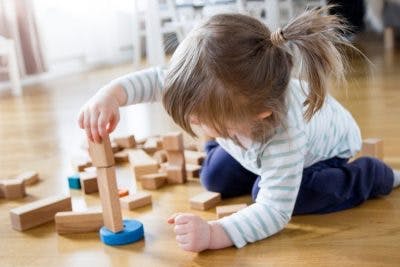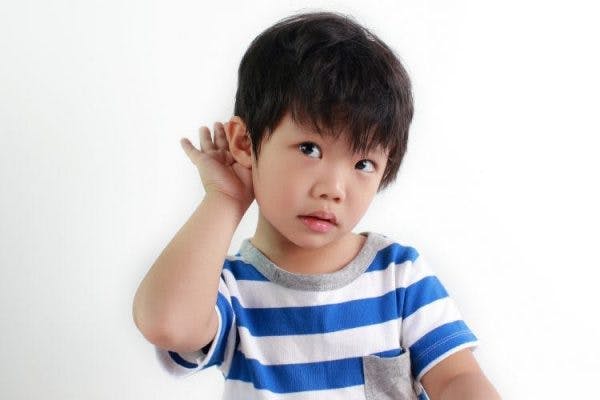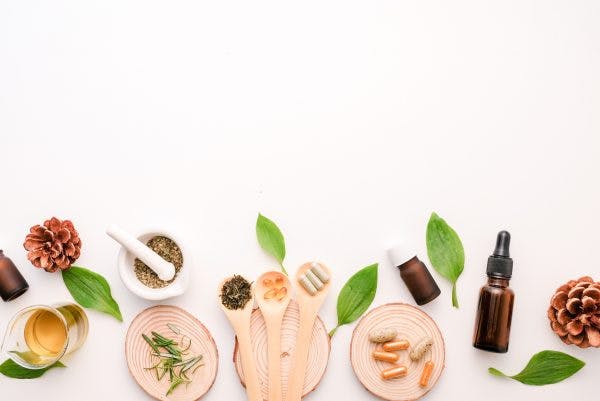While W-sitting is generally not an issue when it’s used as one of many seated positions, it can have more serious implications for children with cerebral palsy.
W-sitting is a seated position where the knees are bent, the hips are rotated inward, and the heels are positioned on either side of the hips. From above, the legs appear to form a “W” shape.
This article will explain why W-sitting can be problematic in children with cerebral palsy and how to correct this harmful habit.
What is W-Sitting?
When they are young, some children prefer to use a W-sitting posture when seated on the floor. W-sitting involves sitting with the knees bent, with the feet resting on the floor on either side of the hips. In this position, the child’s bottom, knees, ankles and feet are all resting on the ground, with the feet placed outside of the hips.
W-sitting provides children with a wide base of support, which can allow them to sit comfortably for periods of time with minimal activation of the core muscles. In this position, children can easily use both hands to play or work with objects on the floor in front of them.
Although opinions are divided on whether w-sitting for prolonged periods on a regular basis has detrimental effects for neurotypical children, children with cerebral palsy may be more likely to experience difficulties as a result of w-sitting.
At What Age is W-Sitting a Problem?
W-sitting is commonly seen among babies as they are learning to sit independently. In fact, it is developmentally appropriate around 10-12 months of age, and is among many preferred seating positions of 3-6 year olds. By 8 to 10 years old, most kids have completely “grown out” of w-sitting. At this age, the hip muscles begin to further stabilize, losing some flexibility and making it uncomfortable to rotate into w-sitting position.
W-sitting may allow babies and toddlers to easily move into and out of crawling position, and many children find it to be a comfortable sitting position. However, w-sitting may become a problem if, at any age, children have a hard time getting out of the position or rarely use any other seated position.
Despite the belief that w-sitting can cause long-term problems, research has not supported this claim. However, in some children, primarily using the w-sitting position may be a sign of underlying medical conditions, such as cerebral palsy. For these children, regularly w-sitting may exacerbate differences in muscle tone and structure.
Why W-Sitting is Dangerous for Children with Cerebral Palsy
Because children with cerebral palsy may struggle with abnormal muscle tone, poor posture, uncontrollable movements, balance, and coordination, they may prefer w-sitting. However, habitually w-sitting may significantly interfere with development.
Below, we’ll discuss 3 complications that W-sitting can cause in children with cerebral palsy.
Decreased Core Activation

Children with cerebral palsy often W-sit to compensate for weakness in the core muscles.
Low muscle tone in the core can cause children to become hands-dependent sitters, meaning that they often lean forward and use their hands to stabilize the body. Because their hands are occupied, hands-dependent sitters cannot play or interact with their surroundings.
To free up the hands, children with cerebral palsy may begin to W-sit. W-sitting creates a wider, more stable base, which makes it easier to sit upright and participate in activities.
However, W-sitting does not engage the core muscles, and disuse only causes the muscles to get weaker. The only way to improve balance and strengthen the core is to consistently practice movements and postures that require core engagement.
Limited Trunk Rotation
Another potential consequence of W-sitting in children with cerebral palsy is limited trunk rotation. When children sit in a W-position, their bodies become stuck in place and trunk range of motion becomes limited.
Reducing trunk rotation makes it more difficult to reach across the body, also known as crossing midline. The ability to cross midline is important not only to physical development, but also to brain development, as it encourages communication between the right and left brain hemispheres.
When trunk rotation is limited, children can get accustomed to grabbing everything on their right side with their right hand and everything on their left side with their left hand. Similarly, rather than reach across their bodies to grab an object, children may move their entire bodies.
As a result, children may not develop bilateral movement skills (the ability to use both the right and left sides of the body simultaneously) and may struggle with poor coordination.
Abnormal Gait Development
Especially because children with cerebral palsy are prone to involuntary muscle contractions (spasticity), W-sitting can affect a child’s gait and balance.
When children with CP W-sit, they’re promoting the inwards rotation of the hips. If spastic muscles tighten in that position, it can contribute to the development of an in-toeing gait.
Now that you understand why W-sitting can be harmful in individuals with cerebral palsy, let’s discuss what you can do to correct it.
How to Correct W-Sitting in Children with Cerebral Palsy

Habits are difficult to break, so early intervention is crucial. The sooner W-sitting is addressed, the easier will be to correct.
In this section, we’ll discuss 3 ways to address W-sitting.
1. Encourage Alternative Sitting Positions
Ultimately, parents should keep an eye out for W-sitting and encourage their children to sit in alternative positions that engage the core and promote cross-body movements.
Some alternative sitting positions you can encourage your child to try include:
- Side sitting involves bending one knee behind the body and the other in front. Both knees should face the same side.
- Crisscross apple sauce involves crossing the legs over each other. It promotes a more neutral orientation of the pelvis and minimizes strain on the joints.
- Long sitting involves sitting with the legs straightened in front of you. This posture helps stretch the calves and hamstrings. However, it may be difficult to maintain this position for long periods. Spreading the legs in a V-shape can create a more stable base.
While these alternative sitting positions may be uncomfortable at first, they will get easier as your child’s core muscles get stronger. Using a combination of these sitting positions can help improve your child’s balance and stretch muscles that may not get stretched otherwise.
Regardless of which sitting positions are used, be aware of how often your child is leaning forward on their hands or leaning back against a wall. Try to minimize consistent leaning in any sitting position to work on strengthening the core.
2. See a Pediatric Physical Therapist
Every individual experiences cerebral palsy differently. Some cases only affect one side of the body, while others can affect both legs, single limbs, or the entire body.
A pediatric physical therapist can help assess how cerebral palsy affects your child’s posture and functional abilities. Then, they can create a customized rehabilitation program to strengthen the core and lengthen the leg muscles.
Often physical therapy may include stretching and exercises, along with more engaging activities, such as playing games while sitting on a therapy ball or completing animal walks.
3. Manage Spasticity
Minimizing spasticity will help prevent complications associated with W-sitting like pain, abnormal gait, and underdeveloped muscles.
Spasticity management can consist of:
- Stretching to lengthen spastic muscles
- Physical therapy to maximize mobility through exercise
- Botox injections or muscle relaxants to temporarily relieve high muscle tone so individuals can focus on physical therapy exercises
- Surgery to reduce the hyperexcitability of spastic muscles or manually lengthen them
- Wearing orthotic devices to support proper musculoskeletal alignment and mildly stretch spastic muscles
Reducing the effects of spasticity can make it easier for your child to maintain other sitting positions and avoid the need to resort to W-sitting.
Understanding W-Sitting in Children with Cerebral Palsy: Key Points
While W-sitting can make it easier for children with cerebral palsy to sit upright, it can also be problematic and contribute to further motor impairments.
To minimize the harmful effects of W-sitting, early intervention is necessary. The sooner a habit is addressed, the easier it will be to correct.
Hopefully, this article helped you understand how W-sitting can affect children with cerebral palsy and how to manage it. Good luck!











